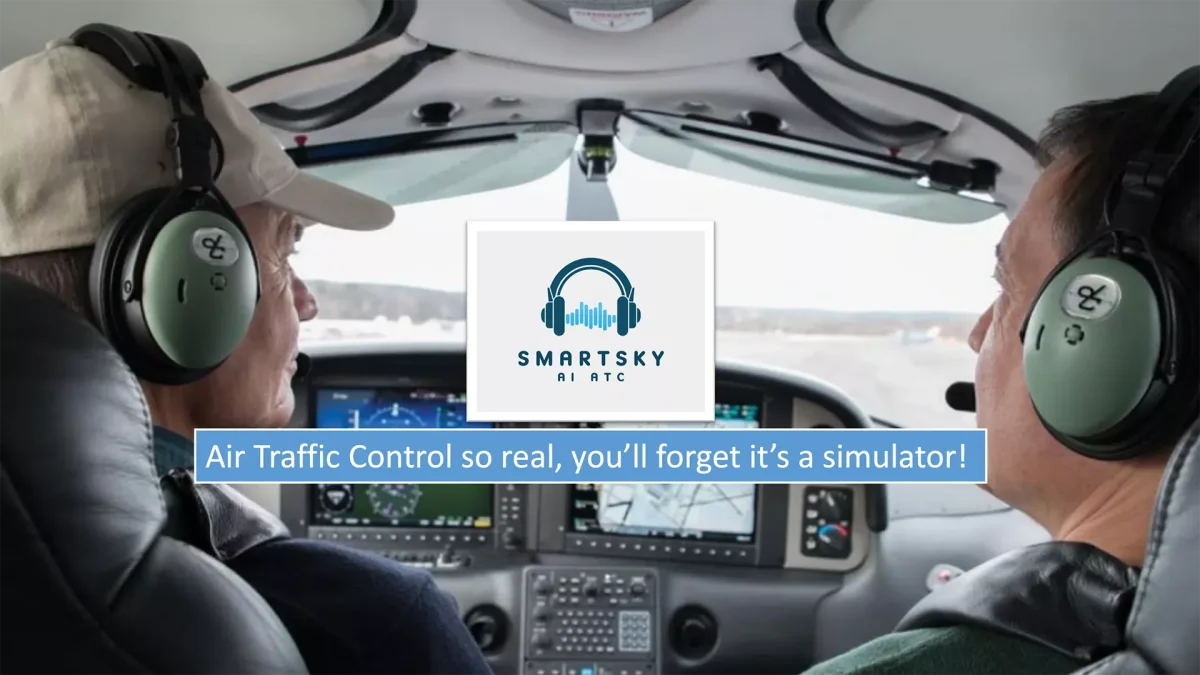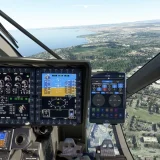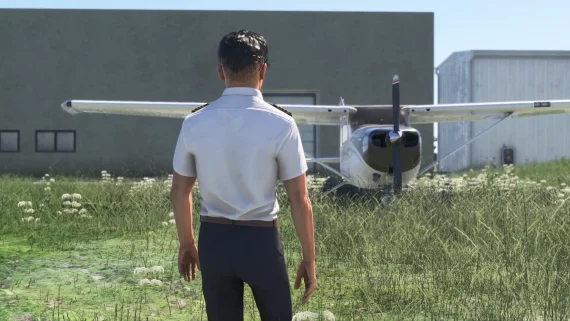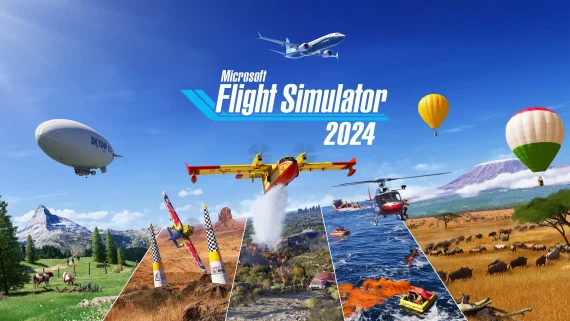Meet SmartSky: an upcoming new ATC system for MSFS powered by AI

The race for a new category of AI-powered ATC systems for flight simulation is heating up. BeyondATC has been setting up high expectations since it was unveiled in the summer, and now there’s a new contender in town hoping to leverage the same technology into a new, VFR-focused ATC system for Microsoft Flight Simulator. It’s called SmartSky and it’s currently in beta!
SmartSky is now being unveiled to the world as the developer seeks help for the final stages of development. In the process, we got to learn more about this system and how it’s set to revolutionize the way simmers interact with the ATC in Microsoft Flight Simulator.
For starters, SmartSky is entirely voice-driven, eliminating the need for menus or buttons. This means that pilots can dial up ground control and call for a taxi just like they would in a real aircraft. The technology is built on a GPT-4 foundation, which is then enhanced with SmartSky’s proprietary algorithms, or as they put it, their “own secret sauce.”
SmartSky’s ATC system is currently focused on general aviation VFR. The system is designed to be forgiving, allowing for some leeway if you’re not entirely sure what you’re doing, but it does assume that the pilot has a basic understanding of ATC procedures.
Now, let’s talk about geographical limitations. SmartSky currently only covers the United States, but it supports all Class B, C, and D airports. Moreover, it covers all positions, including Clearance, Ground, Tower, Approach, Departure, Center, and Unicom. This comprehensive coverage within the U.S. makes it a robust system for those interested in flying within American airspace.
As for future plans, the creators are looking to add “lessons” to the experience. These lessons would involve an instructor guiding you through the communications, enhancing the learning curve for those who might be new to ATC procedures. This feature, however, is planned for next year. They’re also considering expanding into GA IFR but haven’t expressed much interest in commercial IFR, as it doesn’t align with their current passions.
The system is in its final stages of development, with the team focusing on ironing out smaller issues. They’re actively seeking early testers who are willing to fly and provide feedback, especially those who can engage in real-time via platforms like Discord for in-flight troubleshooting. Although the price point is still to be determined, those who contribute to the testing phase will have free access to the system. However, it will be hard to escape a subscription-based service knowing how the system is powered by GPT-4, which has associated per-usage costs.
A pre-release demo video is available on YouTube that provides a glimpse into how SmartSky works. It’s quite impressive indeed – responsive, with realistic voices and situational awareness.
SmartSky is nearly finished and, according to the developer, should be made available sometime later this year.

























